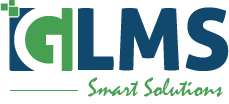In the ever-evolving landscape of modern business, the need for adaptability and efficiency has never been more crucial. As a result, Agile Product Management has emerged as a vital framework for organisations striving to deliver high-quality products that meet customer needs promptly.
But what exactly is Agile Product Management, and how does it differ from traditional methods? This comprehensive guide will explore the principles, processes, and best practices that make this methodology an indispensable approach for today’s product managers, Agile practitioners, and business leaders.
The Fundamentals of Agile
At its core, Agile is a mindset and methodology designed to promote flexibility, collaboration, and continuous improvement. Originating from the software development sphere, Agile has since been adopted across various industries for its effectiveness in managing complex projects. Here are the key principles and values that underpin Agile methodologies, mainly as they apply to product management:
Customer Collaboration Over Contract Negotiation
Agile prioritises ongoing customer communication to ensure the product evolves according to their needs and feedback.
Responding to Change Over Following a Plan
Agile allows for adjustments and pivots, enabling teams to adapt to new information and changing market conditions.
Individuals and Interactions Over Processes and Tools
Agile emphasises team collaboration and communication over rigid processes and tools.
Working Product Over Comprehensive Documentation
Agile delivers functional products in incremental cycles rather than waiting for a final, all- encompassing release.
Agile vs Traditional
Understanding the distinction between Agile and traditional product management is crucial for appreciating Agile’s unique benefits. Traditional management of a product often follows a linear, sequential approach known as the Waterfall model. In contrast, Agile employs an iterative and incremental framework. Here are some key differences:
- Flexibility: Agile allows for regular changes and iterations, while traditional methods stick to a fixed plan.
- Time to Market: Agile facilitates quicker releases through regular iterations, whereas traditional methods may take longer to deliver a final product.
- Customer Feedback: Agile integrates customer feedback throughout the development process, while traditional methods often only incorporate it at the end.
- Team Collaboration: Agile promotes cross-functional teams working collaboratively, whereas traditional methods often involve siloed departments working independently.

The Product Management Process with Agile
Agile’s management of product is a continuous loop, encompassing ideation, development, delivery, and feedback. Here’s a detailed breakdown of each phase:
- Ideation: The process begins with brainstorming and gathering ideas from various stakeholders. These ideas are then prioritised based on value and feasibility.
- Development: The development phase is divided into sprints, typically lasting two to four weeks. Each sprint aims to deliver a usable product increment.
- Delivery: At the end of each sprint, the product increment is reviewed and, if satisfactory, released to the customer.
- Feedback: Customer feedback is collected and analysed to inform future iterations.
Overcoming Product Management Challenges
While Agile offers numerous benefits, its implementation can pose several challenges. Here are some common hurdles and strategies to overcome them:
- Resistance to Change: Employees accustomed to traditional methods may resist Agile practices. Overcoming this requires effective change management strategies, including ⦁ training and clear communication about the benefits of Agile.
- Maintaining Consistent Team Collaboration: Agile relies heavily on team collaboration. Ensuring regular meetings, using collaborative tools, and fostering a culture of open communication can help.
- Balancing Flexibility and Structure: Although Agile promotes flexibility, it still requires a certain level of structure to function effectively. Implementing well-defined roles and responsibilities can strike this balance.
Best Practices and Tools
Implementing Agile Product Management involves following best practices and leveraging the right tools. Here are some recommendations:
- Regular Stand-Ups: Daily stand-up meetings help align the team and promptly address any obstacles.
- Backlog Grooming: Regularly updating and prioritising the product backlog ensures that the team constantly works on the most valuable tasks.
- Retrospectives: At the end of each sprint, conducting a retrospective meeting helps the team reflect on what went well and identify areas for improvement.
- Tools: A popular product management tool, like the one from GLMS, can help with documentation and collaboration.
The Future of Agile
Product management is a dynamic and practical approach to product development in today’s fast- paced business environment. By understanding and implementing the principles of Agile, product managers, Agile practitioners, and business leaders can enhance efficiency, improve customer satisfaction, and gain a competitive edge.
Embracing Agile is not challenging, but the right strategies and tools can effectively manage these hurdles. As businesses continue to evolve, the value of product management will only become more apparent.
Take the Next Step
Are you ready to transform your product management approach? Dive deeper into Agile methodologies and take your business to new heights with GLMS.
For further insights and tools to enhance your Agile journey, call +61435887197 or email info@glms.com.au.

